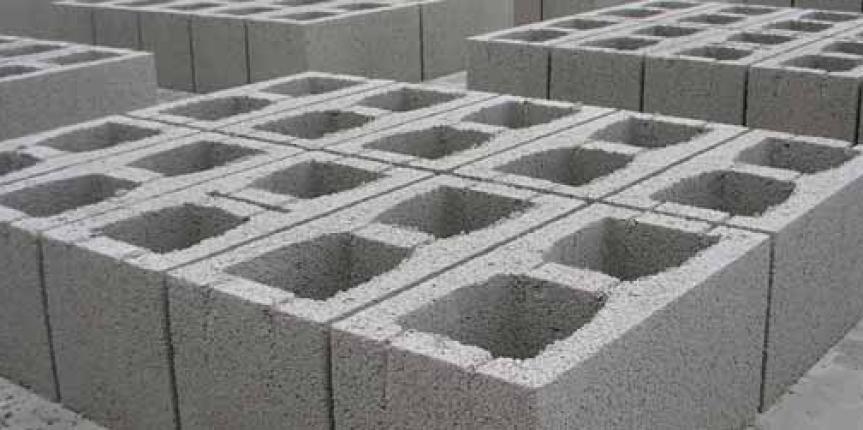
Hollow Concrete blocks have a void area more prominent than twenty-five percent, they come in different shapes and sizes. Concrete blocks are an example of masonry units used in the construction world. Blocks Factory has various precast panels used to get different shapes and sizes of different types of hollow blocks used in construction works such as walls of buildings, retaining walls, and office buildings.
Hollow building blocks for walls are famous in the construction industry due to the numerous benefits that it presents. It is also readily available and easy to deploy when needed.
8 Advantages of Concrete Hollow Blocks Construction
Construction building blocks for walls are embedded with many gains to construction that are too important to be ignored. Perhaps before you embark on your next construction work, you may need to consider these advantages of using concrete hollow cellular block masonry in buildings before making that important choice.
Rapid Execution of work made from molds that produce hollow cinder blocks of similar shapes, sizes, and weight, it is easy to deploy hollow concrete blocks in construction works, all that is needed is to fit the right hollow brick to the right place. Then, the same solid block size and shape help quickly assemble them to form any particular shape required in a construction job.
1. Highly Durable
Construction blocks compacted by high pressure and vibration make the building strong, resilient, hardened to severe load and weight.
2. Better Insulation Properties
The air in the construction building block does not allow heat or cold in or out of the building. No wonder hollow concrete blocks are insulated against heat, dampness, and sound. Hollow blocks keep the house cool in summer and warm in winter.
3. Environmentally Friendly
It does not pollute or have any known environmental nuisance it constitutes to the system. In addition, hollow cement blocks are machine made and thus do not produce fumes, which helps save the environment. This is the major hollow bricks advantages.
4. Cost-Efficient
It helps minimize building construction materials used at a construction site, though it minimizes the cost of building block construction.
For example, one concrete hollow masonry block replaces five traditional bricks, which helps in reducing construction costs. Hollow block constructions also helps to save labor hours by reducing both mortar and labor costs.
5. Low Maintenance
To maintain hollow breeze blocks buildings is not expensive, compared to other building materials that are available.
6. Conserves Space
The construction of thin walls with hollow cement blocks is very common. So, it helps to reduced space used in construction and increases the floor area.
7. Bonding of Mortar and Plaster
Since the surfaces of construction blocks are rough, this provides for good bonding between mortar and plaster.
Types of Hollow Concrete Block
Different types of building blocks used in constructing a building are-
1. Stretcher Block
2. Corner Block
3. Pillar Block
4. Jamb Block
5. Partition Block
6. Lintel Block
7. Frogged Brick Block
8. Bull Nose Block
Let’s have a look at these different types of concrete blocks-
1. Stretcher Hollow Block
Stretcher Block is the common type of hollow block that has small extra stretched parts at the ends. Stretcher blocks are used to construct the middle portion of the wall (parallel to the wall construction) and join the construction’s corners.
2. Corner Construction Blocks
Corner Block is used to construct the upper corners of the windows, doors, etc., that help with the wood framing. The Corner Block side is visible outside, and the ends are locked with the stretcher Block.
3. Pillar Blocks for Building
Pillar block is used in constructing the walls, in which both the side of the blocks are visible outside (widely used in the construction of pillars). Hence it is also called a double corner block.
4. Jamb Block
Jamb Hollow Breeze Blocks is connected to the corner block and Stretcher block to construct the wide opening of windows in the wall to provide a huge space for the windows.
5. Partition Block
Partition Block is used mainly for the wall partition at the middle of the building. Partition Block is more durable, protected against fire and wind, and gains strength on ages.
6. Lintel Block
Lintel Block is the U-shaped block that is placed on the top of the openings. Lintel Block also called beam block that helps for the construction of the Lintel beams.
7. Frogged Brick Block
Frogged Brick Block is depressed or pressed at one side of the block that holds the mortar to provide a strong bond for the bricks placed on the top.
8. Bull Nose Block
Bull Nose Block is similar to the corner blocks with one or two rounded edges. Bull Nose Block is used for the construction of the corners when needed for the round edges.
Hollow blocks come first to mind when construction projects expected to be environmentally friendly, durable, and cost-effective are considered. Therefore, you may consider it for your next construction task.

Thank you very much, when I will do my next construction then I will use only hollow concrete blocks only. Thanks you for giving me knowledge about that.
Sales room
we can use plastic ashes in hollow blocks ?